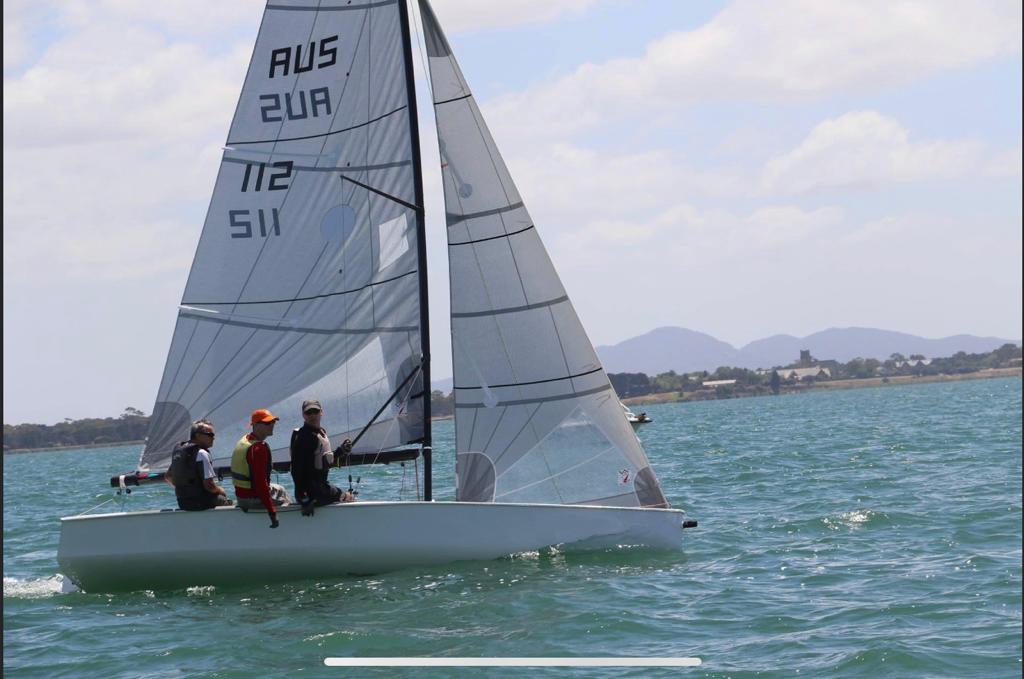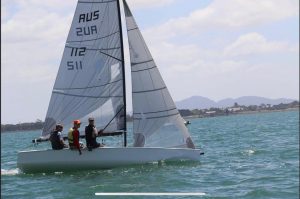

Rig Tune to Get Better Performance.
Firstly, I would like to correct an error in last weeks Blog regarding using the compass to establish Line bias. Phil Crebbin, a UK 470 Olympian kindly pointed this out. He has provided the correct method which is copied below in bold.
Everybody knows that it is the wind direction vs the line direction that defines the bias of the line (subject only to other things like any variation of current at each end of the line, of course). The direction to the first mark has absolutely nothing to do with it, except in the extreme case when the mark can be laid in one, without having to tack.
One clear way of demonstrating this is if you have a shifty wind, with the line laid to be approximately on the average wind direction. Say that the wind is periodically shifting ca. 10 degrees on either side of this mean direction. When the wind is on its maximum left shift of 10 degrees, clearly the port end of the line is now favoured by that 10 degrees. Conversely, when the wind is on its maximum right shift of 10 degrees, the starboard end of the line is now favoured by that 10 degrees.
RIG TUNE –The four main elements to rig tune.
Mast Rake is measured from the masts vertical position to how far aft that the mast is angled. Angling the mast aft shifts the power aft and forces the bow to windward and creates weather helm.
Forestay length determines how much rake you have and how much rake a boat needs to generate the right amount of weather helm is a function of hydrodynamics being hull form, keel shape and placement (or in the case of a dinghy, centreboard position or rake if your class has a pivoting board).
In most one-design racing classes, sailmakers and class stalwarts have put a lot of time into figuring out what works best. They have created tuning guides that specify headstay lengths and thus rake for different conditions.
These are readily available by doing a Google search of your class.
Mast Bend –
After setting the rake turn your mind to mast bend. Mast bend changes the mainsail shape, the more bend the flatter the mainsail which in turn gives less power.
No matter what type of rig you have, you want to start with a little mast bend or pre-bend. This is the amount of bend you have with no backstay tension.
Lengthening the headstay increases the bending moment. This adds pre-bend and is why it’s important to set the rake first.
When your mainsail develops diagonal wrinkles from the clew up to the luff, you are over-bending the mast. It has too much bend for the amount of luff curve in your mainsail.
Athwartship Tuning
the rig must be centred in the boat otherwise performance will be different on each tack. Using the main halyard and taking the loose end to the gunwale on each side will give you a side-to-side reference.
The tension on the shrouds needs to be firm and the same on both sides. If you are sailing a dinghy, use a tension gauge when setting up on the beach.
In a keelboat, when sailing in 10-12 knots of breeze, sight up the aft face of the mast to check whether the tip is falling off or not. If it is, you need more upper tension.
The next step on a boat with lowers or with multiple spreaders and diagonals is that you need to work on the lowers and/or diagonals next.
In over 10 knots, you want the mast to be straight. For more power in light air, you can let the middle of the mast sag a little. This increases the depth in the mainsail.
It is common in one-design classes to ease tension on the lowers (and diagonals if relevant) in light air to create a smooth sag.
Headstay Sag
When the headstay sags, the headsail becomes fuller and more powerful, which is great in light conditions. As the breeze builds, you’ll want to reduce the amount of sag. This de-powers the boat and helps with pointing.
When you pull on the backstay, or in the case of swept spreaders with no backstay, sheet tension and/or pulling on the side stays (if they are adjustable) will initially tighten the headstay, but because you are also compressing the rig, the more backstay or rig tension you pull on, in turn, cause mast bend which increases headstay sag.
To counteract this some classes have a strut or chocks to lessen the bend. It keeps the headstay sag to a minimum. In other boats, you have check stays to change the bend and thus control headstay sag. Your aim is to match the rig and sails to the prevailing conditions.
#sailingtowin #sailtowin #sailboatrace #yachtracing #sailfaster #sailing

